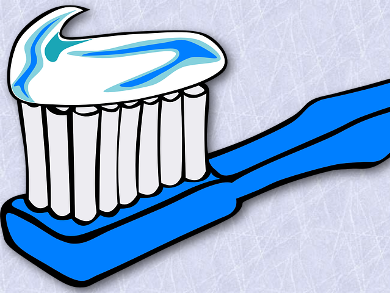Toothpaste, enriched with activated carbon, is said to absorb apolar substances. This should have a positive effect on oral health and tooth color. Companies such as the Swiss Curaprox, the Japanese Kobayashi, and the Russian Splat sell such toothpastes. Studies on the use of activated carbon in toothpaste or other cosmetics are not yet available. In view of the properties of the substance, however, it is unlikely that coal will cause anything on the teeth. In addition, not every coal is activated coal. The Swiss Black-is-White toothpaste seems to contain carbon black instead of activated carbon.
Eliza Leusmann looks in a recent article in Nachrichten aus der Chemie at such and other trends and at what really works. Her recommendation include:
- Brush your teeth twice a day with the right cleaning technique.
- Use a toothpaste with an RDA value (Relative Dentin Abrasion) of about 50. It cleans the teeth sufficiently, but does not damage either teeth or gum. Manufacturers do not have to specify the RDA value on the package; valuses for many toothpasts are listed at www.der-zahnarzt.net/rda-werte-von-zahnpasta/
- The German Society for Dentistry, Mouth and Jaw Medicine (Deutsche Gesellschaft für Zahn-, Mund- und Kieferheilkunde) recommends for adults a toothpaste with 1000 to 1500 ppm fluoride. The fluorinated layer ensures that bacteria such as Streptococcus mutans – which is considered the main cause of caries – Streptococcus oralis, and Staphylococcus carnosus adhere less to the teeth. In addition to remineralization, this is an important factor in fighting caries.
- Do not wait 30 minutes after a meal before brushing your teeth, but immediately clean the them: The waiting time makes health conscious clean their teeth particularly intensive – and so damage them – or leads to no cleaning at all.
- Auf die Tube drücken,
Eliza Leusmann,
Nachr. Chem. 2017.
DOI: 10.1002/nadc.20174056104




